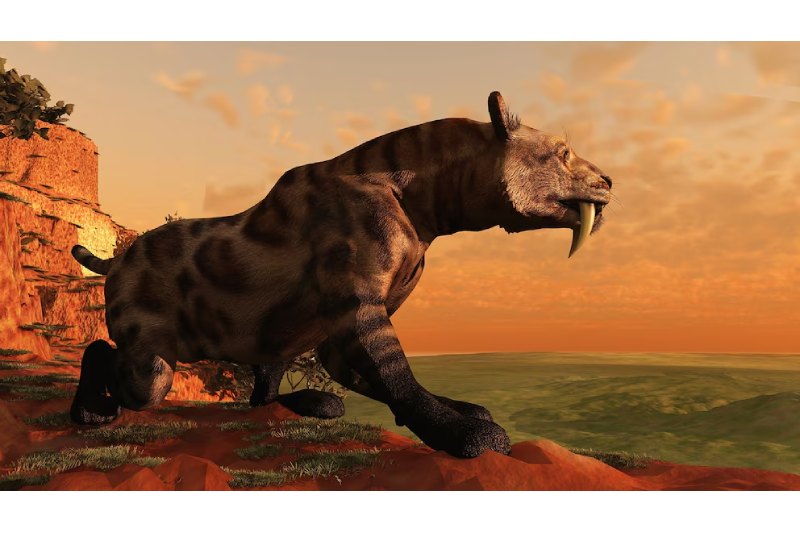For the first time, researchers have examined the frozen bones of a 35,000-year-old saber-toothed cat and discovered “significant differences” between it and a contemporary lion cub.
According to a report released Thursday in the journal Scientific Reports, the cub’s mummified remains was discovered in the Siberian permafrost in 2020. Along with the cub’s frontal remains, researchers found pelvic bones, a femur, and shin bones wrapped in a block of ice.
According to the researchers, the prehistoric mammal’s look is unlike any “in the modern fauna.”
Using radiocarbon dating, a team of researchers established that the cub, which belonged to the Homotherium latidens species, lived between 35,000 and 37,000 years ago.
It is uncommon to find frozen remains of mammals from the Late Pleistocene. Traditionally, paleontologists have had to use the preserved bones of these prehistoric carnivores to draw inferences about their appearance.
This time, scientists were able to examine the size and location of its ears, its enormous mouth and unusually formed nose, its massive neck, lengthened forelimbs, and its dark coat because the frozen carcass was still coated in fur, including whiskers, mummified tissue, and muscle.
The skulls of other young lions and the remnants of the saber-toothed kitten were compared by the researchers with those of a 3-week-old lion cub, Panthera leo.
By comparing its incisor teeth to those of the lion cub, they were able to determine how old it was.
According to the experts, a thick layer of velvety, dark brown fur, nearly an inch long, coated the mummified cub’s body. Compared to a modern lion cub, its neck was longer and more than twice as thick.
The cub’s forelimbs were nearly all intact, displaying sharp, curled claws and wide, furry paws that could be used for walking in the snow.
Before the ice age ended and their prey started to disappear around 10,000 years ago, saber-toothed cats roamed freely throughout Africa, Europe, and the Americas for hundreds of thousands of years.
According to the experts, the mummified cub’s discovery demonstrates that cats existed in Asia during the Late Pleistocene.
Saber-toothed cats were stockier and better adapted for ambush assaults, in which they would wrap their powerful limbs around their prey and dig their saber teeth in, in contrast to modern big cats, who have long legs and use their long tails for balance when racing.
According to the researchers, the young saber-toothed cub already exhibited these distinguishing characteristics, supporting the conclusions drawn by paleontologists from their examination of adult skeletons.
